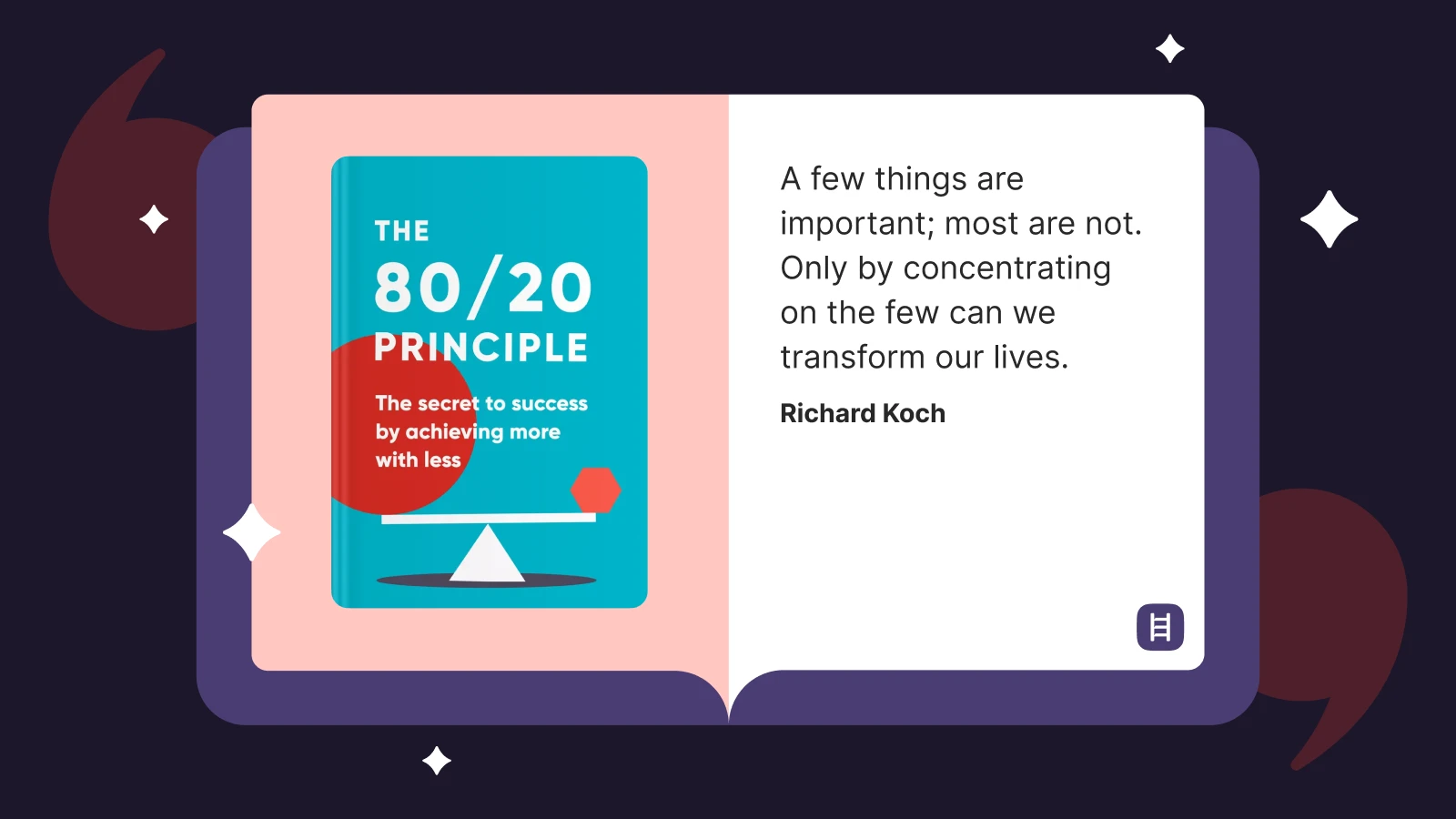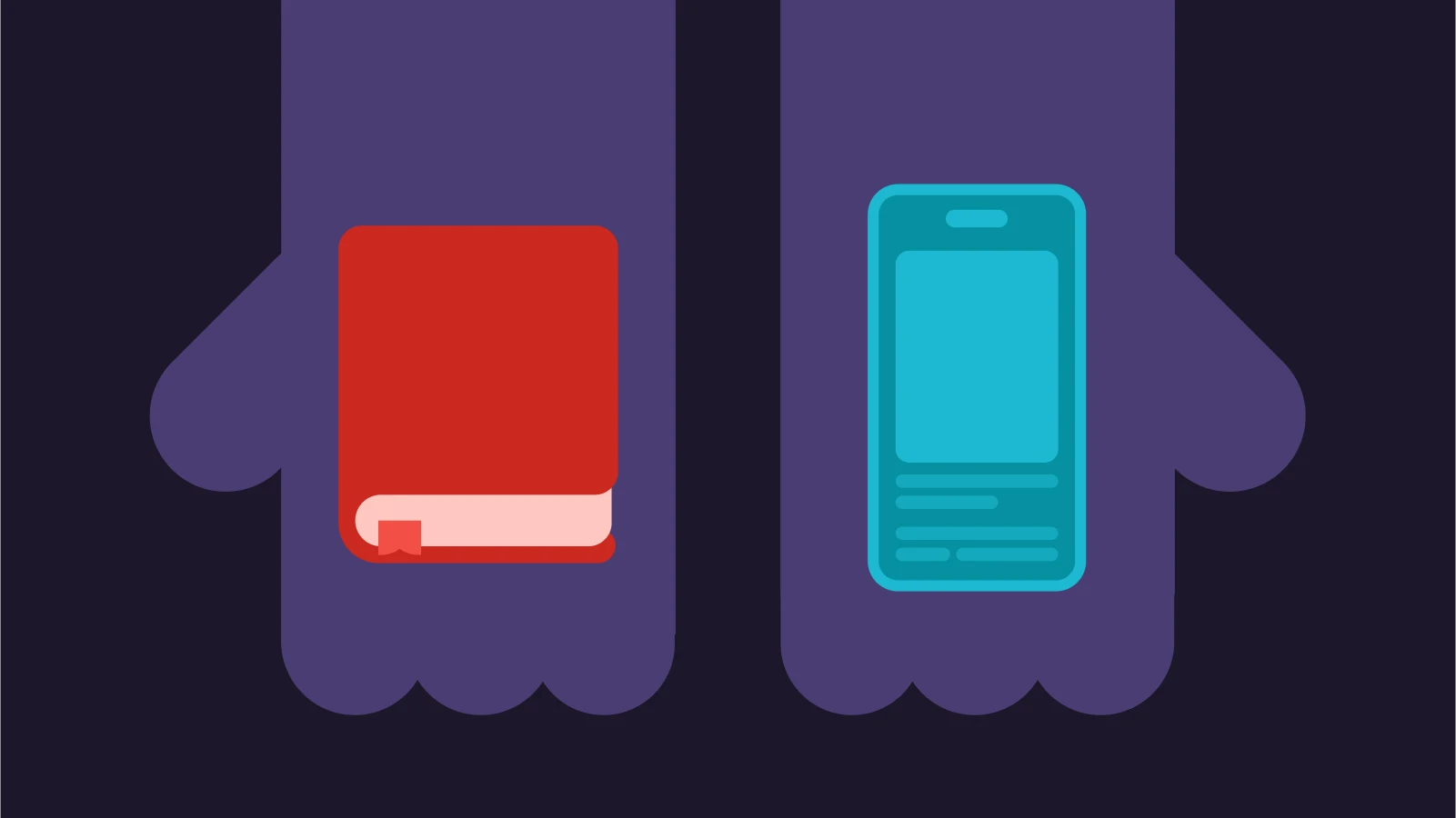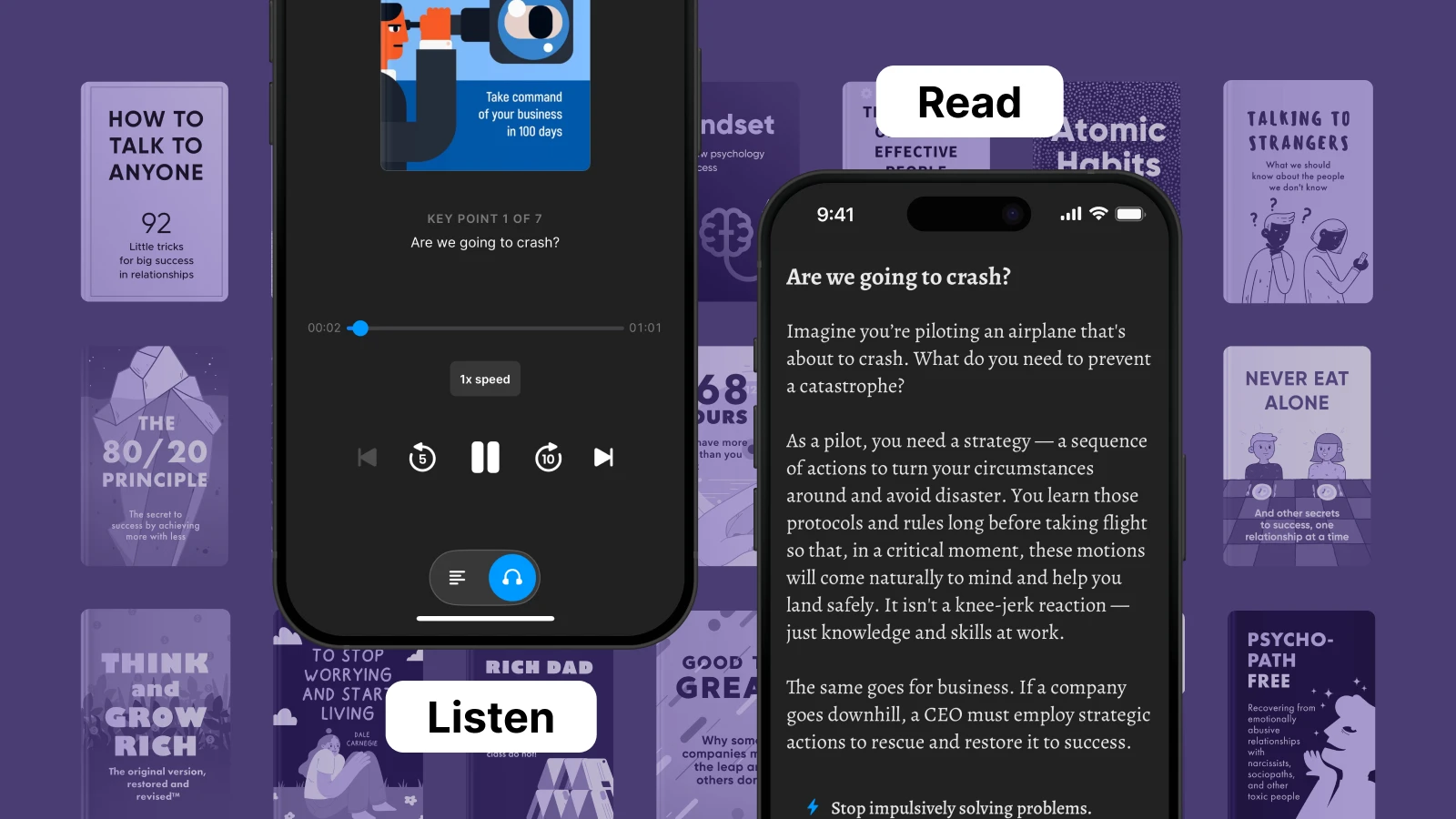Ditch the long lectures and boring textbooks! Learning has evolved from a mundane chore to an exciting way to usher in constant growth, digitally. Embracing eLearning as a top priority will empower you to thrive in today's dynamic world. After all, modern education should focus more on building excitement for learning than on merely the traditional training method of information transfer between teacher and student.
How to optimize a learning strategy for self-education and continuous upskilling without the time-consuming long-form lectures?
Top 10 benefits of microlearning
Saves time without sacrificing knowledge
Boosts retention through spaced repetition
Perfectly fits busy schedules
Reduces cognitive overload
Improves learning engagement
Encourages lifelong learning
Supports habit formation
More affordable than traditional learning
Increases completion rates
Pairs perfectly with book summaries
What is microlearning, and how does it work
Microlearning is a unique learning method of delivering content in short bursts and with a specific purpose. The result is high learning efficiency and a desire to search for more information. Bite-sized learning is a new strategy that allows you to acquire new skills and knowledge quickly. It is trendy for several reasons:
The speed of life is increasing, so information quickly becomes outdated.
You can apply new microlearning content at any time and from any place with internet access.
The growing popularity of smartphones gave microlearning new momentum. They allow users to consume new information on the go.
Microlearning uses spaced repetition, dividing learning topics into modules according to the principle of 1 module — 1 thought — 1 skill. Each microlearning module lasts for 5–15 minutes.
Bite-sized learning offers training material in formats such as:
A podcast snippet
Short videos
Flashcards
Quizzes
Infographics
Gamification
LMS (learning management system)
Special microlearning platforms are emerging that help create interactive training sessions. Companies and personnel training specialists typically use them for onboarding or on-demand corporate training.
Let's explore the advantages of microlearning in more detail.
Top 10 benefits of microlearning
With its many advantages, microlearning is the education of the future.

1. Saves time without sacrificing knowledge
Microlearning breaks down a considerable amount of information into smaller pieces, allowing for much better reflection and evaluation of new knowledge. Another substantial advantage is the less time spent on learning, as you don't have to spend hours reading huge information texts. You can gain valuable knowledge in a concentrated format through short micro-lessons.
Microlearning can be more cost-effective to develop for both the educational sphere and company employee training. Short learning modules require fewer resources to create, and due to their small size, students are more likely to complete the course, giving them more value for their money. In addition, microlearning is easily adaptable to new requirements, which allows you to update the content without the need for radical changes, ultimately saving time and money.
If you are engaged in staff training or want to use microlearning for personal development, check out our research on the best microlearning platforms.
In 'What the Most Successful People Do Before Breakfast', Laura Vanderkam states that successful people start their day with the important, not the urgent: exercise, reading, studying, planning, and family time. That's where microlearning fits perfectly into a busy schedule, offering a flexible way to build knowledge without overwhelming your day.
On your morning commute, during your lunch break, or before bed, you can easily find 15 minutes to step towards new knowledge. And regular short classes contribute to better memorization than infrequent but prolonged marathons.
2. Boosts knowledge retention through spaced repetition
In the process of learning, the listener constantly receives new information. However, German psychologist Hermann Ebbinghaus found that after the usual "memorization" of the material, a person can recall about 45% of the information in an hour. After a week, this figure drops almost by half, to 25%.
People can reduce the rate of forgetting in two ways:
Regularly repeating the educational material
Perceiving new data gradually, using several approaches
The human brain works to perceive information better if it is repeated several times over a long period, taking breaks for rest.
Microlearning apps often have review features in the form of flashcards or quizzes. For example, in the Headway app, you can save cards with book insights, and from time to time, you will receive these flashcards for better memorization.
3. Perfectly fits busy schedules
"Two core abilities for thriving in the new economy: 1) The ability to quickly master hard things. 2) The ability to produce at an elite level, in terms of both quality and speed." — Cal Newport, 'Deep Work'
Traditional, long-form training programs with busy schedules and constant digital distractions often feel overwhelming. Microlearning helps you make the most of every minute of your time. It can be done at any time, place, and pace, making it ideal for busy people. Effective microlearning is also great for those who prefer to review material multiple times to better understand it before moving on to the next step.
Adults learn best when learning is delivered at the most relevant moment in their workflow, allowing them to immediately connect what they are learning to the work they do and to the organization's overall goals and strategies.
4. Reduces cognitive overload
"A few things are important; most are not. Only by concentrating on the few can we transform our lives." — Richard Koch, 'The 80/20 Principle'
In traditional training, information is presented in huge volumes of complex topics that the student must master in one or more classes. But this method affects concentration, overloads the brain, and reduces memory. Microlearning, on the other hand, is built on short and understandable modules, stressing key learning objectives. This way helps the student better absorb the material and avoid information overload.

Microlearning is designed for a limited attention span. Studies show that people remember 20% more material through chunked learning than traditional methods, have lower stress levels during learning, and actually enjoy the learning experience.
5. Improves learner engagement
Millennials and Generation Z constantly use new technologies in their work and free time. Understanding their interests and approaching employee development strategies to align with their expectations and learning preferences is essential.
Now, people are interested in quickly and easily accessing necessary knowledge, ideally from their smartphone or tablet. Since bite-sized learning is focused on mobile devices, it is an excellent solution for finding answers to questions.
TikTok has made the concept of clip thinking the norm, thus playing a significant role in boosting the appeal of short-form learning. Today, you can also learn through videos from social media (TikToks, reels, shorts). Therefore, microlearning ideally covers the need for quick access to knowledge.
In 'How We Learn,' Benedict Carey says that short, regular, meaningful sessions are better retained in memory. Chunked learning is best in that it promotes better cognitive engagement and longer-term knowledge acquisition than traditional long sessions.
6. Encourages lifelong learning
"Your real education is the one you give yourself." — Michael Ellsberg, 'The Education of Millionaires'
Improving skills and acquiring new knowledge are key to achieving career success. When people realize they lack the skills to perform specific tasks, their motivation and satisfaction drop sharply, adversely affecting work efficiency.
Lifelong learning is your empowering journey — one that fosters personal growth and keeps your mind sharp. It enriches your life by exposing you to new perspectives and deepening your professional and personal experiences. When you embrace learning, you fuel your curiosity, boost your cognitive health, and stay engaged and vibrant at every stage of life.
Read Nicky's story about how she tried microlearning for six months and how it changed her life.
7. Supports habit formation
"Habits are the compound interest of self-improvement." — James Clear, 'Atomic Habits'
Regular mini-lessons help build a habit of studying, which is one of the key factors for success. In snackable learning, metrics (such as number of modules completed, days in a row, and completion percentage) play a key role in habit formation.
When you see that you have completed something or scored 100%, your brain receives a dopamine boost, reinforcing your desire to continue. Even small successes are motivating. Microlearning with metrics makes the process visible and predictable. When the platform shows how many days in a row you have studied, it stimulates you not to break the chain — this is how a habit is formed according to the principle of "don't break my streak" (as in Duolingo and Headway).
8. More affordable than traditional learning
Microlearning modules are available in various formats, but short videos are the most popular. The reason is simple: the modern generation, accustomed to clip-based thinking, finds it much easier to perceive content in this format, which is more engaging than traditional learning.
Traditional learning is often rigidly structured, while bite-sized learning is flexible and adaptive. In industries where knowledge is updated very quickly, such as IT, medicine, or sales, just-in-time learning allows you to swiftly add fresh data so that learners can always access relevant information and skills needed in the modern world.

In 'Don't Go Back to School,' Kio Stark discusses self-education as a real alternative to formal education. Stark emphasizes that education is no longer exclusive — now, knowledge is available to anyone with the internet and motivation. On-demand learning allows you to apply knowledge in practice immediately, while traditional education distances theory from real experience. Microlearning is a flexible, democratic, practical form of education that provides wider access to more knowledge.
9. Increases completion rates
"It's not how much you practice, but how you practice. Deep practice, which is built on a foundation of struggle and attention, builds skill fast." — Daniel Coyle, 'The Talent Code'
Short-form learning uses interactive training content such as quizzes, games, and multimedia to make the learning process captivating and engaging. According to a study by Software Advice, short lessons are completed 50% more often than long courses. The quick feedback and sense of progress motivate people to continue learning.
10. Pairs perfectly with book summaries
Microlearning allows you to focus on one topic, task, or goal. You don't need to retell all the information, just its essence. Book summaries are an effective and affordable way to study every day. Learning sessions in the Headway app are summaries that concentrate on the book's main ideas into a concise presentation - in 10-15 minutes. You get the gist, without fluff.
When learning becomes part of a routine (for example, one summary per day), a sense of progress appears, and development becomes systematic. With Headway, you can "test" dozens of topics, authors, and approaches - and only then read the whole book if the topic has touched you.
In 'Tiny Habits,' B.J. Fogg states:
"Tiny is mighty. At the heart of behavior change is always the same thing: a shift in identity."
A book summary is a tiny habit: A daily action that takes 10–15 minutes but stimulates development, thinking, and a new identity (a person who learns daily). The Headway format is ideal. One summary at breakfast, one on the road, and one in the evening, instead of a social media feed doomscrolling session.
This creates a sustainable, regular educational ritual.
Why microlearning works: The science behind it
What factors have contributed to the rise of rapid learning? What advantages does it offer? Can its popularity be explained scientifically?
In 1988, learning psychologist John Sweller discovered something very interesting about how the brain processes information. He called it the theory of cognitive load. He found that memory has two parts: the operational (or working) memory and the long-term memory.
Your working memory is like a small workspace with limited capacity, so you can only handle a few pieces of information at once. If you try to cram too much in, it becomes overloaded, and your ability to learn effectively drops. That means you retain less of what you're trying to learn. So, to understand better, it's essential to give your working memory just the right amount of information at a time.
Barbara Oakley, instructor of the online course Learning How to Learn, says that the brain perceives information in small parts (chunks) that form a big picture.
Another interesting fact is that сognitive scientists have demonstrated that people learn most effectively when a diagram or infographic accompanies an explanation. Illustrations improve memory retention more than standalone text. This is precisely what flashcards and infographics are in microlearning.
The forgetting curve introduced by Hermann Ebbinghaus in 1885 suggests that participants begin to forget material immediately after a training session as the memory gradually regresses. Within the first hour, participants remember less than half of the information presented. After a day, more than 70% is forgotten, and by the sixth day, most participants have forgotten 75% of the training content.
The idea behind an effective microlearning strategy is to expose participants to the material multiple times, which helps combat the forgetting curve. Studies have shown that spacing out learning helps people remember and learn more effectively. When creating a training module or program with interval learning, the approach is first to present the initial material and then reintroduce the same concept or set of concepts after a short period. This can be repeated several times, depending on the complexity of the material.
How to get started with microlearning today
Learning should always be about you and your interests, not other people and their desires. Think about your future and what you are passionate about. That is the best option if your interests are centered around career advancement. If you have always wanted to learn to draw, focus on that.

You also need to make a clear list of what you want to be able to do and what you have always wanted to learn. Once you have identified what increases your self-motivation, it is worth figuring out what you will study.
Choose a topic or goal.
Download the Headway app.
Set a daily learning habit (even 5 mins).
You will get a selection of the best book summaries that will give you good ideas in the minimum amount of time.
For example, if you want to eat healthily, Headway has a large curated selection of books on nutrition.
Make significant progress in small steps with the Headway app
Focused learning bursts have enormous potential for gaining necessary knowledge. It also empowers people and helps them develop skills without taking long courses.
How the Headway app works:
A professional team of analysts reads the book and highlights key ideas, concepts, quotes, and cases.
Everything is presented in short text or audio (usually 10–15 minutes).
The summaries are adapted for quick reading or listening from your smartphone, tablet, or computer.
Tests, reflection questions, and checklists are often added to help you better understand what you read or listen to.
Why not give it a try? Start with small steps that can turn into great habits. You'll love the benefits of microlearning with Headway!
Frequently asked questions on the benefits of microlearning
Why is microlearning effective for retention?
Bite-sized learning works with the characteristics of the human brain, not against it. Information is presented in small portions so as not to overload working memory, allowing the brain to better process and retain knowledge. The microformat makes it easy to organize repetition (spaced repetition), which, according to the Ebbinghaus forgetting curve, significantly increases long-term memorization. The short format reduces the risk of attention loss — better concentration = better memorization.
How does microlearning improve engagement and learning outcomes?
Microlearning improves engagement and learning outcomes thanks to its short format, high flexibility, interactivity, and availability on a smartphone. All of which activate emotional perception, helping with focus. It is not only more convenient but also more effective: it keeps a person in the learning process longer, deeper, and more willingly.
How does microlearning fit into workflow/on-the-job learning?
Microlearning fits perfectly into the workflow due to its structure, duration, and adaptability. Employees can learn what they need at the moment of need — before a call, presentation, or technical task. Five to ten minutes of learning does not interrupt productivity and does not require special conditions. Learning modules can be directly tied to the company's sales skills, negotiations, and leadership goals. On-demand learning does not distract from work—it complements it.
Which format works best for microlearning — text, audio, video?
The best format for microlearning depends on the user's goals, context of use, and personal preferences. Text is best for quick review and repetition (for example, checklists or book summaries). Audio format is perfect for traveling, playing sports, or just enjoying everyday life. Video is effective for visualization and demonstrations and is better for visualizing complex ideas.
Does microlearning allow personalization and flexibility?
Yes, microlearning is great for personalization and flexibility. This format allows you to choose topics that interest you right now, adapt them to your level of knowledge (platforms can suggest new lessons based on your answers, goals, or completed modules), and determine when, where, and how much to study.












